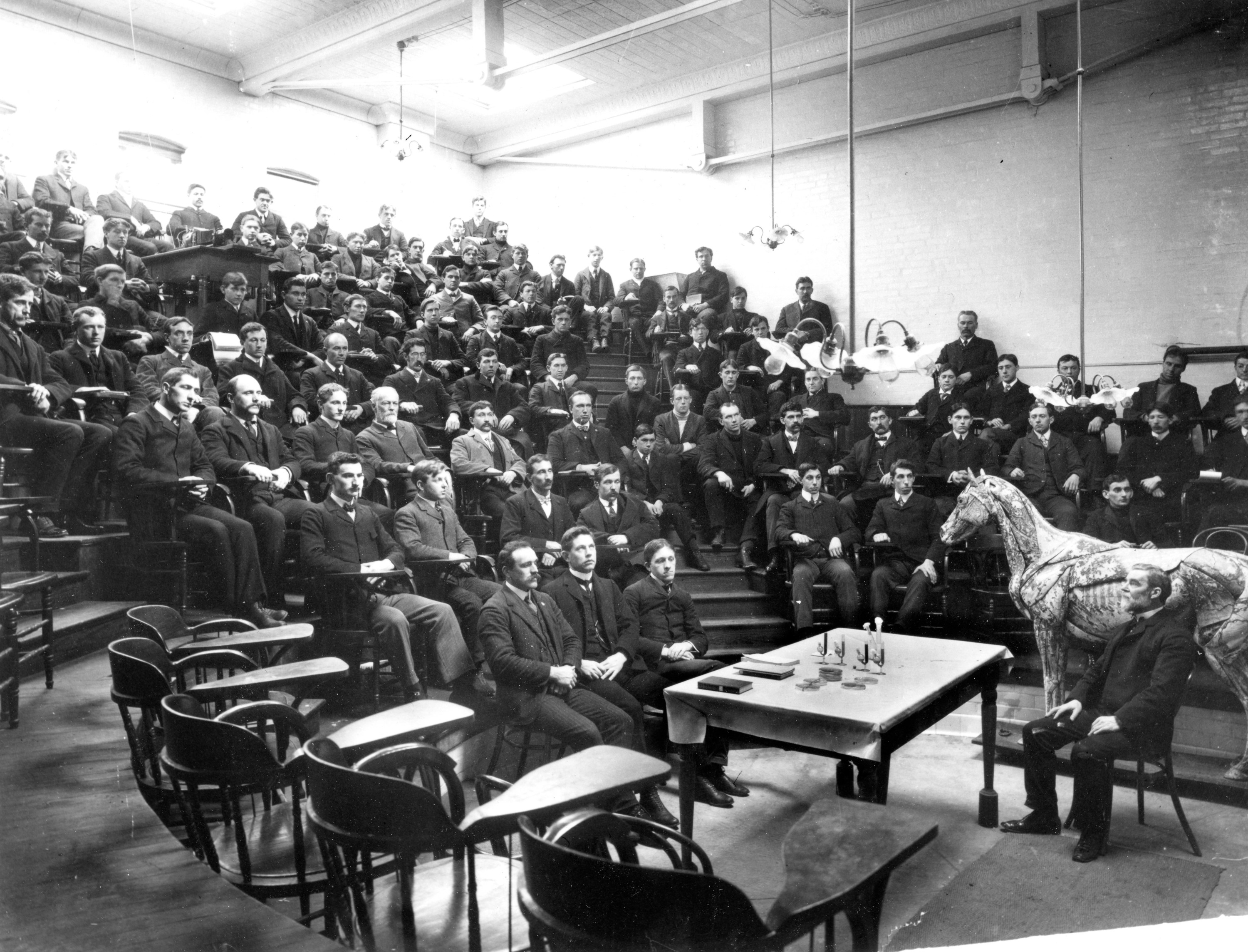Early days
A history supporting horses for over 150 years
According to Cornell lore, Andrew Dickinson White, the university’s first president, set sail on a faculty recruitment trip to Europe in the 1860s, with university founder Ezra Cornell seeing him off at the dock. As White’s ship departed, Cornell shouted, “Don’t forget the horse doctor!”
That horse doctor would be Dr. James Law, a Scottish veterinarian, who arrived in Ithaca in 1868. Throughout his career, Law fought tirelessly to establish meaningful standards for veterinary medicine, education, research and public health to benefit both animals and people. Over 150 years later, these standards remain a key foundation in Cornell Equine's work.
After World War II, members of the horse industry in New York approached Cornell and expressed a need for further research on equine diseases. Dr. Stephen Roberts was named chairman of a new Equine Research Committee.
The three principal researchers in this cross-campus initiative were active for approximately 20 years: nutritionist Dr. Harold F. Hintz, pathologist Dr. Herbert F. Schryver, and Dr. John E. Lowe, clinician and future director of the Cornell Equine Park.
In 1979, the new Harry M. Zweig Memorial Fund for Equine Research, which honors the distinguished late veterinarian Dr. Harry M. Zweig, was created to support and promote equine research at the Cornell University College of Veterinary Medicine.
These competitive grants available to Cornell Researchers helped established Cornell as an international powerhouse in equine research.

